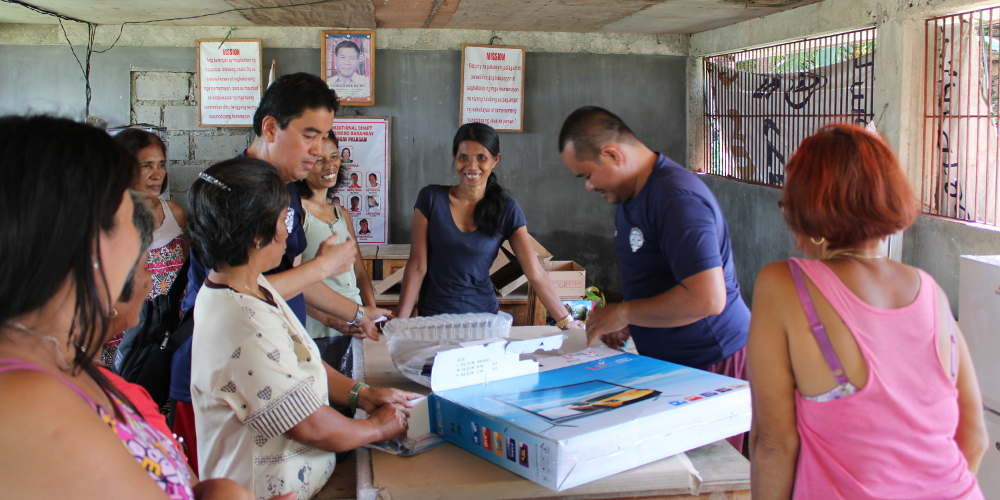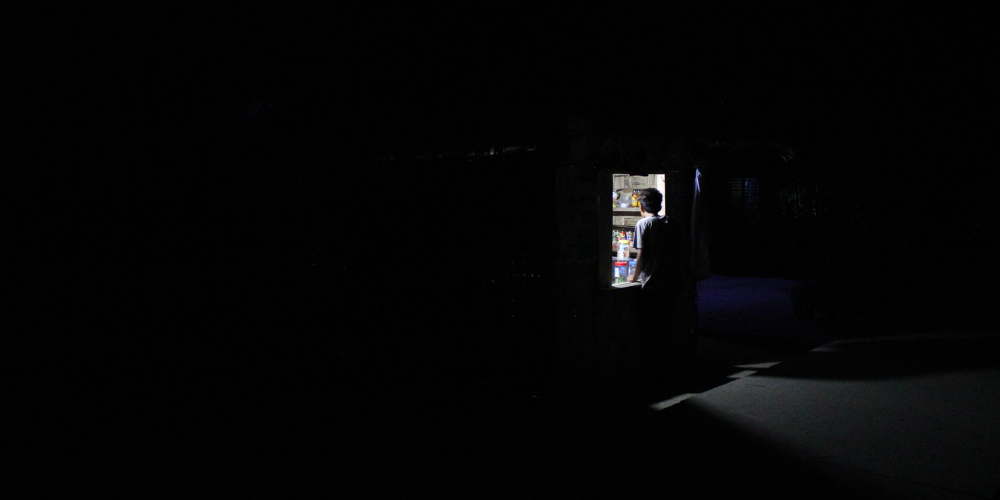However, beyond the Metro and in the provinces, access to electricity is still not available for everyone, nor are jobs that provide regular sources of income. Living in Metro Manila versus the province represents two different realities for Filipinos: in their way of life, productive livelihood, access to amenities or services, etc. The electrification access, its reliability and cost, is also to be looked at through “provincial lenses” to find the most appropriate way to bring energy solutions in those remote areas.
Equipping remote and off-grid villages with smart grids
ATE Co’s experience with access to energy in the vulnerable urban areas of Metro Manila proves that energy always represents a significant cost – it is often the largest budget expenditure for households.
© Henri Souville ©OKRA
Together with our partner, OKRA, ATE Co designed a way to reach off-grid communities by supplying clean, efficient, solar energy to remote and off-grid communities in the form of small solar grids where households can share the solar power as per their energy needs.
OKRA is an Australian solar technology company, which has won the PFAN Asia Clean Energy Financing award for most innovative and investment ready business. OKRA developed an innovative, hardware plus Software as a Service (SaaS) solution that enables the creation of decentralised 50V DC system for rural, off-grid communities. The “charge controller” is the brain of this system, which is what they provide in ATE Co’s solution.
This is how it works in practice: consider one off-grid community composed of 50 households. Each household has different energy needs, some want two lights, others want one light and two fans, and others want three lights and one refrigerator. Those energy needs result in a quantity of watts per hour that ATE Co has grouped into “packages” – ranging from 8 to 45 pesos per day. Households choose what package they need and can afford, then ATE Co designs a grid to capture the solar power. Each household has its own charge controller to save the power requested through the chosen package.
The first pilot took place in partnership with the Quezon Province electric cooperative – QUEZELCO II – that manages the electrification plan for the province. We began installing households in October 2019 on Palasan Island, a completely unelectrified island.
This close collaboration with the electric cooperative makes the testing of new technology possible. On a long-term basis, ATE Co believes that in order to reach electrification targets in a country where the geography does not suit the standard centralized grid, creative renewable energy solutions are the answer. Smart grid is an answer.




